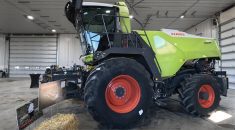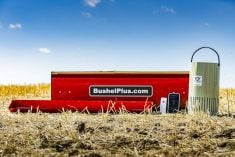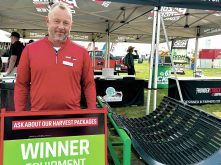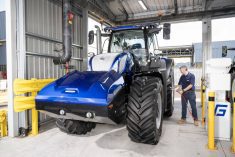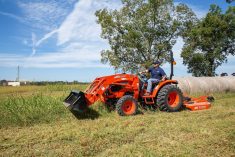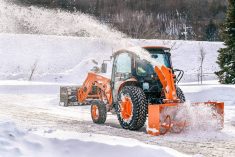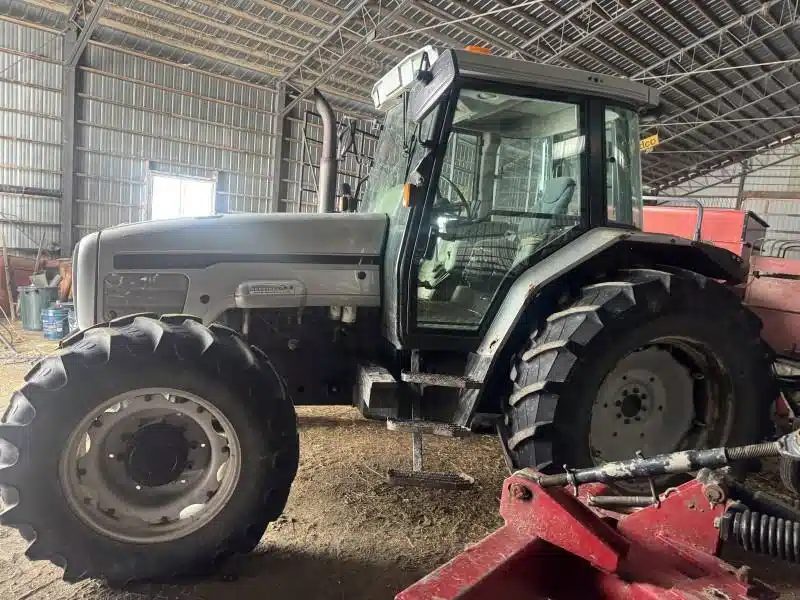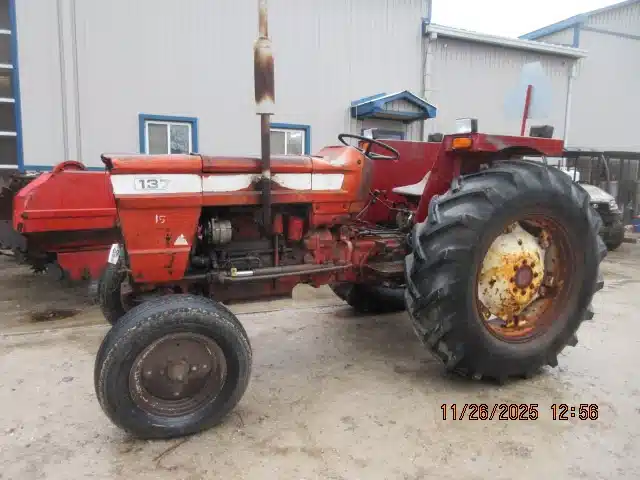Among vintage and classic tractor enthusiasts are many with large collections dedicated to a single brand. While John Deere and International Harvester undoubtedly have the largest followings, those with a passion for the now-extinct White Farm Equipment brand seem to be few and far between.
But that’s exactly the focus of Manitoba farmer Craig Rubeniuk’s passion. His collection includes a large number of White tractors and even some examples from the brands that eventually merged to form WFE: Oliver, Cockshutt and Minneapolis-Moline. The walls of the farm workshop and two rooms in the family home are filled with signs and other brand-related collectibles to complement the assortment of machines parked outside.
“I guess you want to go back to my roots as a young kid driving around with my grandpa, Peter Rubeniuk,” Craig says of why he collects WFE equipment. “Just riding around with him, I just got the love for White.”

VIDEO: White Farm Equipment collection a nod to Manitoba farmer’s roots
Read Also

Claas brings 1000 Series SP forage harvesters to Canada
In mid-August, Claas unveiled its new line of Jaguar forage harvesters at an event in Visalia, California, deep in the heart of that state’s dairy region.
White, which manufactured trucks and other products, jumped into the farm equipment business in 1960. Financial problems, caused in large part by the recession in farming during the 1980s, and corporate changeovers led to the later-named White Farm Equipment brand being acquired by Agco in 1993.

Some of the tractors in the Rubeniuks’ collection still see regular duty on the family farm, particularly higher-horsepower models.
“The four-wheel drives (are used most),” Craig says, “just because we can pull the bigger footage with more horsepower. The little ones we use occasionally for harrowing, mostly for stone picking, stuff like that.

“They all run. I think being a licensed mechanic got me into this: I can fix them myself and not pay somebody big bucks to do it. I think it wouldn’t happen if I had to pay someone to do everything I’ve done.”

In all, the collection includes 28 running tractors and several others used for parts. Asked which machines are his most prized pieces, Craig finds it hard to pick a favourite.
“They’re kind of all prizes to me,” he says, “but the ones that stand out in my mind are the 4-270s. They are the rarest and had the most iron muscle for White before they went into receivership. We have four runners and one for parts.”

The tractors in the collection came from a wide area across the Prairies, stretching from Winnipeg as far west as Alberta.
Aside from the machines, an impressive collection of signs and memorabilia are displayed both inside and outside of buildings on the farm, with many lining the walls of the farm workshop. Craig says he believes in having all the memorabilia out on display, rather than tucked away in some storage location.

“When people collect something, what do they do? They shoehorn it in a granary somewhere and nobody gets to see it. When we decided to put the barn together, we decided to hang up the signs so people could see.”

The signs and other items — such as a microfiche viewer and an accompanying complete set of parts information cards — were sourced from former dealerships. Having that parts data as a way to find obsolete part numbers has helped Craig get the right parts when he’s needed them.

Other pieces of memorabilia were found in a variety of places — but tracking it all down required a lot of looking and travelling.
“Now with the internet, it’s handier,” says Craig. “Just calling old dealerships, word of mouth, contacting them seeing if they had anything left, getting a little bit here and there. It starts adding up.”
Like any dedicated collector, Craig is keeping his eyes open for other interesting pieces.
“Whatever comes up. To finish off the White line I’m kind of grabbing the last of them from ’85 to ’87, before they merged with Allied. Probably one I’d look forward to is getting an AGCOStar, the 8425 — Agco’s version of the White. It’s not a true White tractor but it’s the last (of the line).”




